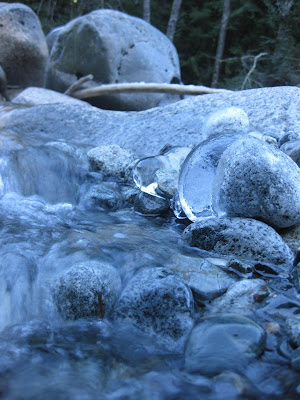Really, if you had to go out into your garden (or someone else's) and pick something for your sweetie (or yourself) at this time of year, you could come back in with a scented bouquet of
Sarcacocca and
Helleborus, also known as
Himalayan Sweetbox and
Lenten-Rose that rivals the more traditional/blah bouquet we have been brainwashed to expect. This bouquet is best displayed in a bowl, because most Hellebores are noddy and look down, so you have to snap off the head and float it face-up, like so...

Notwithstanding the fact that presenting a bouquet of
Helleborus and the staccato-sounding
Sarcacocca sounds more like you are pronouncing a curse rather than declaring your devotion, the overall effect is pleasing, and merely an issue of marketing. Simply present the bowl, like an offering, while describing the contents as "Himalayan Sweetbox and Lenten-Roses", intoning something to the effect that you'd be willing to "give up" (get it? "Lenten") anything to be with so-and-so. I should mention that Sarcacocca smells like jasmine--that is the scent lingering in the air these days, usually in shady plantings near entrances of buildings. Even if you are not performing the above recommended ritual, bring a bouquet inside. It will fill a room with scent.
So here's a somewhat surprise-guest, taking the place of my afore-mentioned Amaryllis in my window. Yes, my African white lily is blooming again, on Valentines, two years after leaving Ghana (
snooooo-ork). That's me, blowing my nose (because I have a cold, not because I'm having a romantic relapse). Buut, the point being: flowers hold very strong emotional memories, and I see no reason why red roses should monopolize the love-market. If your sweetie picked a spontaneous handful of
Scabiosa or
Farfugium or dandy-lions the first time, that's how it is. That's all I'm sayin.
One Love (makes the world go 'round)






























